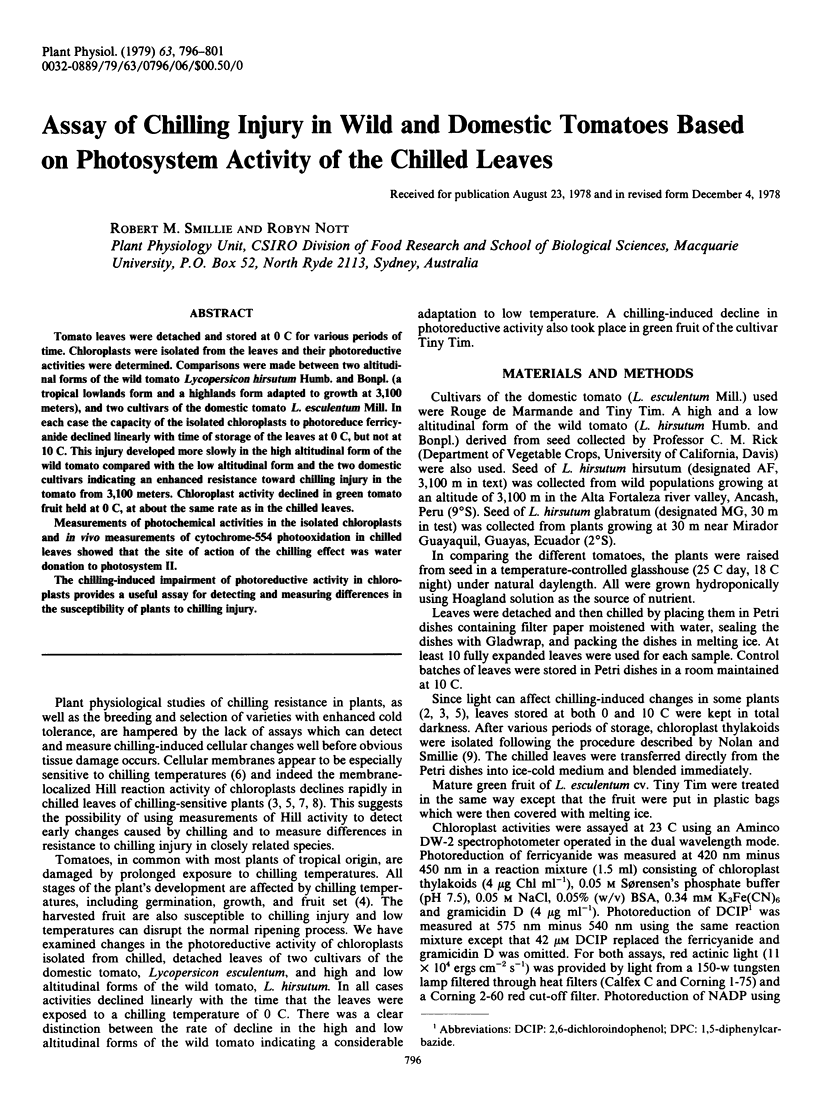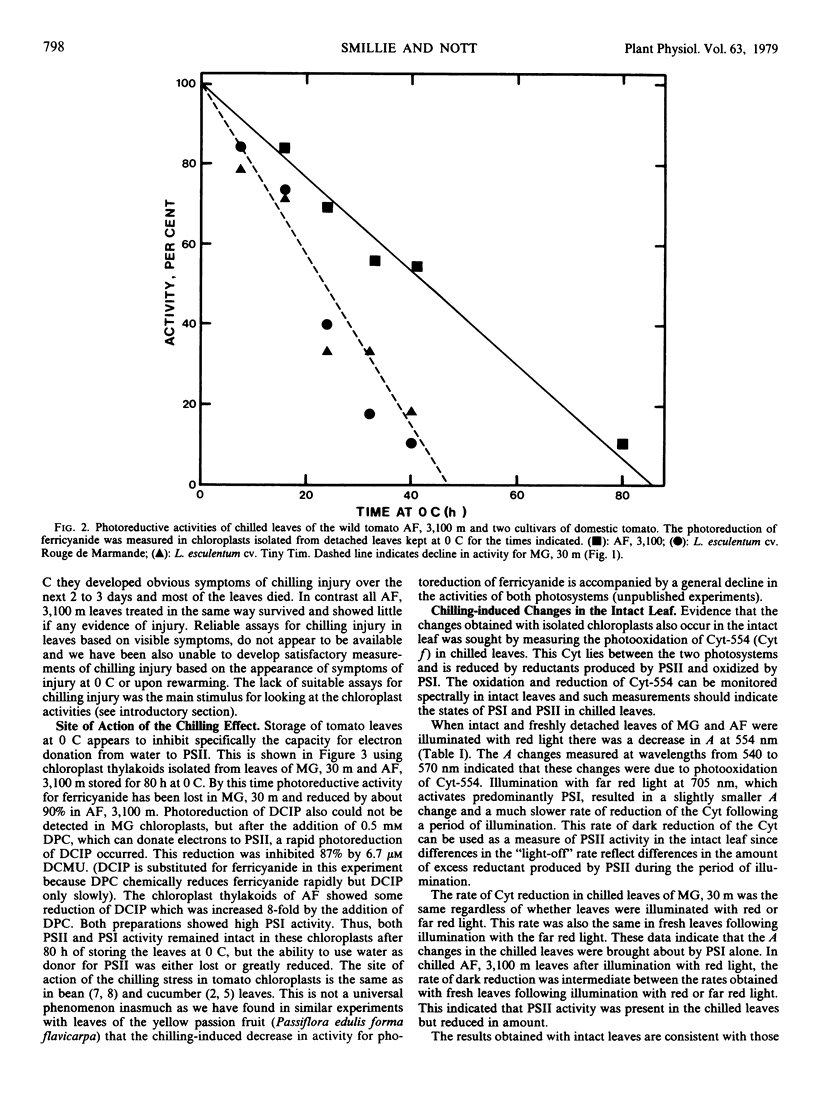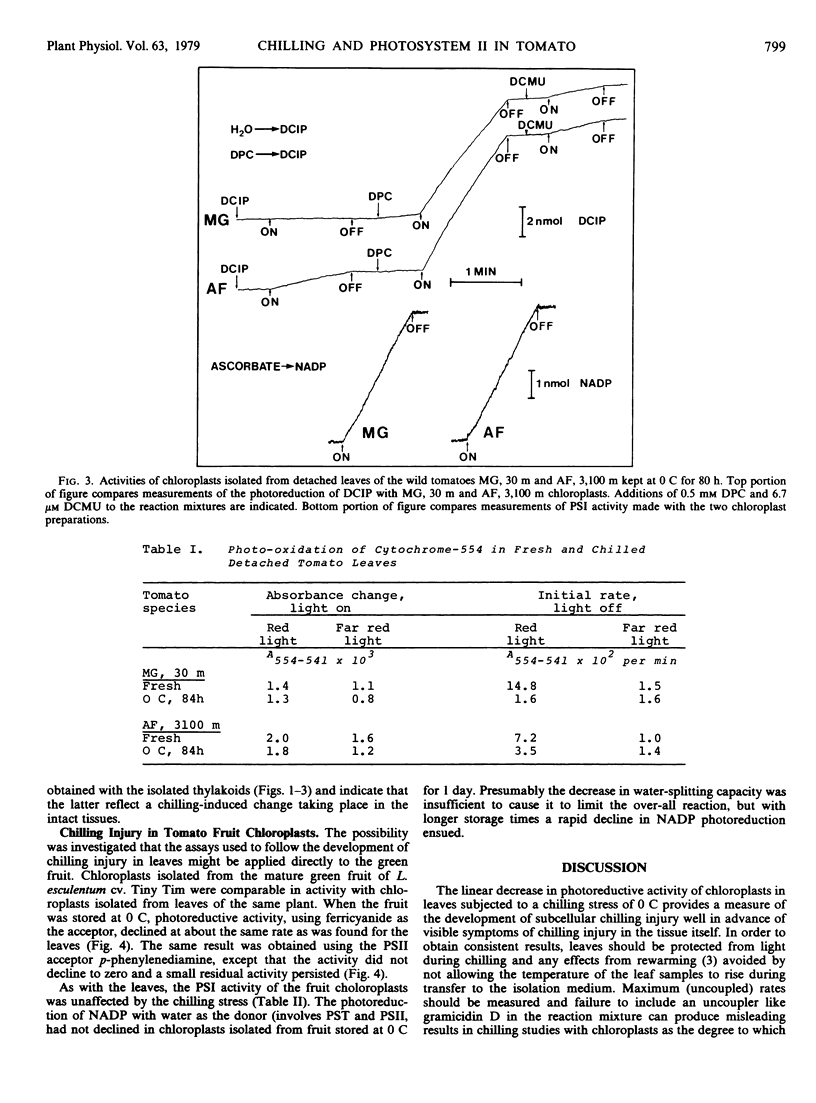Abstract
Tomato leaves were detached and stored at 0 C for various periods of time. Chloroplasts were isolated from the leaves and their photoreductive activities were determined. Comparisons were made between two altitudinal forms of the wild tomato Lycopersicon hirsutum Humb. and Bonpl. (a tropical lowlands form and a highlands form adapted to growth at 3,100 meters), and two cultivars of the domestic tomato L. esculentum Mill. In each case the capacity of the isolated chloroplasts to photoreduce ferricyanide declined linearly with time of storage of the leaves at 0 C, but not at 10 C. This injury developed more slowly in the high altitudinal form of the wild tomato compared with the low altitudinal form and the two domestic cultivars indicating an enhanced resistance toward chilling injury in the tomato from 3,100 meters. Chloroplast activity declined in green tomato fruit held at 0 C, at about the same rate as in the chilled leaves.
Measurements of photochemical activities in the isolated chloroplasts and in vivo measurements of cytochrome-554 photooxidation in chilled leaves showed that the site of action of the chilling effect was water donation to photosystem II.
The chilling-induced impairment of photoreductive activity in chloroplasts provides a useful assay for detecting and measuring differences in the susceptibility of plants to chilling injury.
Full text
PDF





Selected References
These references are in PubMed. This may not be the complete list of references from this article.
- Entsch B., Smillie R. M. Oxidation--reduction properties of phytoflavin, a flavoprotein from blue-green algae. Arch Biochem Biophys. 1972 Aug;151(2):378–386. doi: 10.1016/0003-9861(72)90512-7. [DOI] [PubMed] [Google Scholar]
- Garber M. P. Effect of Light and Chilling Temperatures on Chilling-sensitive and Chilling-resistant Plants. Pretreatment of Cucumber and Spinach Thylakoids in Vivo and in Vitro. Plant Physiol. 1977 May;59(5):981–985. doi: 10.1104/pp.59.5.981. [DOI] [PMC free article] [PubMed] [Google Scholar]
- Margulies M. M. Effect of cold-storage of bean leaves on photosynthetic reactions of isolated chloroplasts. Inability to donate electrons to photosystem II and relation to manganese content. Biochim Biophys Acta. 1972 Apr 20;267(1):96–103. doi: 10.1016/0005-2728(72)90141-7. [DOI] [PubMed] [Google Scholar]
- Nolan W. G., Smillie R. M. Multi-temperature effects on Hill reaction activity of barley chloroplasts. Biochim Biophys Acta. 1976 Sep 13;440(3):461–475. doi: 10.1016/0005-2728(76)90034-7. [DOI] [PubMed] [Google Scholar]


